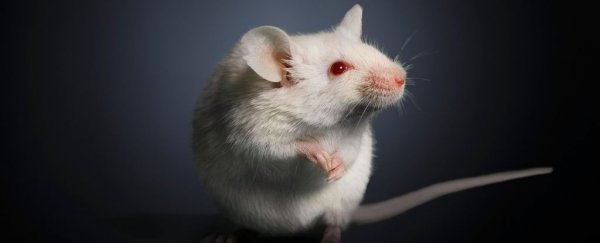A series of new experiments on mice have revealed a key process by which the brain and immune system communicate to burn deep stores of visceral fat.
It's the first time scientists have identified a neuro-immune pathway directly linked to fat control, and while the findings are limited to mice, the authors are hopeful the system extends to other mammals, like humans, too.
Visceral or 'deep' fat is the yellow matter that envelops the abdominal organs. Like most forms of fat, its presence is crucial to maintain a body's fundamental functions, but if it builds up too much, it can also cause health issues like heart disease and cancer.
Knowing how it accumulates could one day help us tackle obesity and obesity-related illnesses in humans, but the process is really complicated.
In recent years, scientists have begun to suspect the nervous system and the immune system are both working together to control visceral fat. After all, this deep yellow matter not only houses nerve fibers, it also contains immune cells.
Yet communication between the two is hard to pin down.
Previous lab work performed by these researchers found deep fat around the lung is controlled via messages between nerves and immune cells, but when researchers looked at the deep fat around a mouse's ovaries or testes, they found no such communication.
"The neurons and the immune cells were not talking to each other," explains molecular biologist Ana Filipa Cardoso from the Champalimaud Center for the Unknown in Portugal.
"So we investigated other candidates in the tissue, finally coming across a rather unexpected 'middleman'."
What was once thought to be a cellular bystander, has now turned out to be a critical mediator. In fact, mesenchymal cells (MSCs) were all but ignored by scientists until fairly recently.
"The widespread view was that they mainly produced the scaffolding of the tissue, over which other cells would 'do the work'. However, scientists have since discovered that MSCs carry out multiple essential active roles," says immunologist Henrique Veiga-Fernandes, also from the Champalimaud Center.
When researchers burned away mesenchymal cells in the deep fat of mice, the nearby immune cells, known as type 2 innate lymphoid cells (ILC2), stopped regulating the growth of the fat.
To trace the nerves that innervate MSCs back to their original source, researchers injected a glowing retrovirus into the mouse nerves.
The peripheral messages received by visceral fat ultimately appeared to be coming from discrete areas in the brain stem, midbrain, amygdala, and the hypothalamus.
Given how important the nucleus of the hypothalamus appears to be in regulating the body's metabolism, the authors hypothesize this area of the brain is a 'central hub' for fat control. From here, messages are sent to specific immune cells within deep fat to ensure energy balance throughout the body.
For visceral fat around the lungs, these neural messages seem to go straight to ILC2s. But in the gonads, it looks as though they first need to be 'translated' by MSCs before they can be sent to nearby immune cells that regulate fat metabolism.
"It's as though the neural and immune cells don't speak the same language, and the MSCs serve as an interpreter," says Veiga-Fernandes.
"Taken within the larger context, it does make sense. MSCs effectively make up the tissue's 'ecosystem', and so they are perfectly situated to fine-tune the activity of other cells."
The study is the first clear example of a body-brain circuit that instructs immune cells to burn fat, according to Veiga-Fernandes, and it has scientists hopeful we can one day mimic the process to control deep fat stores among those with particularly harmful levels.
Of course, there's still a lot we don't know about ILC2s and how they control visceral fat, but the fact that we now have an idea where they are getting their messages from is a good starting point.
Going forward, researchers want to know what might be triggering the nucleus of the hypothalamus to send fat-burning messages to parts of the body in the first place. It's also worth exploring why some stores of visceral fat have ILC2s that can be directly innervated by the sympathetic nervous, while others need translators like MSCs.
"The most challenging thing in a project like this one is that you're truly working at the frontier," says Veiga-Fernandes.
"This is not immunology anymore, and it's not neuroscience either. You have to master technology, methods and approaches that are cross-disciplinary or multidisciplinary. Some of them don't even exist, and you have to develop them by scratch. Yet, at the same time, the conceptual challenge is exhilarating; we are truly venturing into the unknown."
The study was published in Nature.
